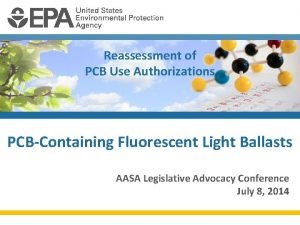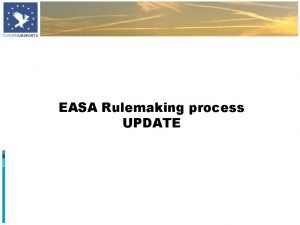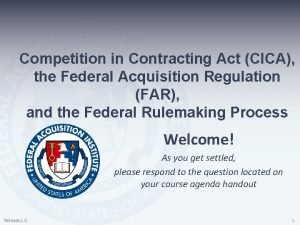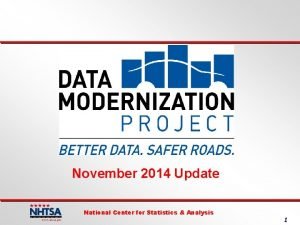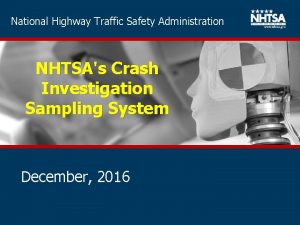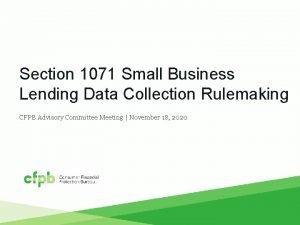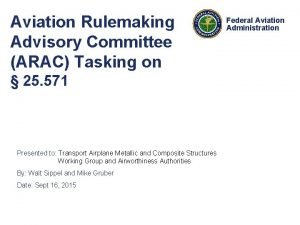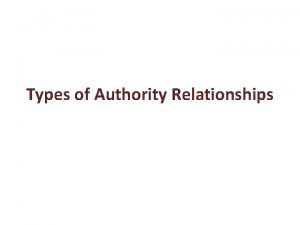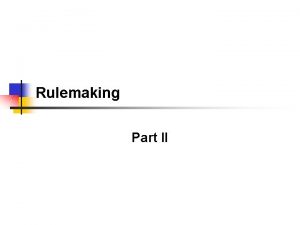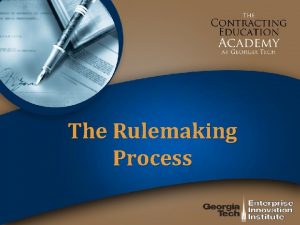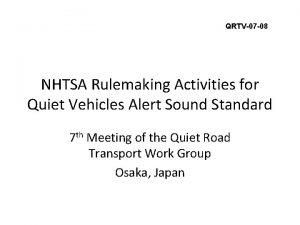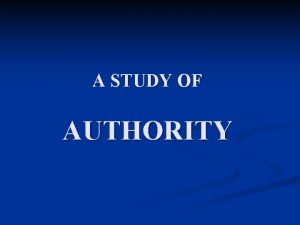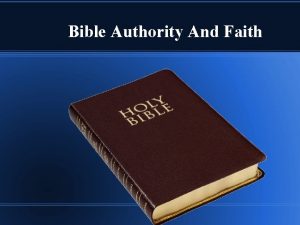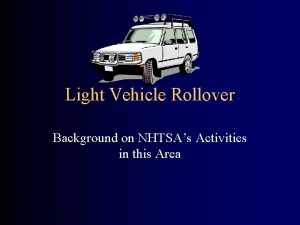The Rulemaking Process 2 NHTSAs Rulemaking Authority NHTSA










- Slides: 10

The Rulemaking Process

2 NHTSA’s Rulemaking Authority • NHTSA has statutory authority to establish Federal Motor Vehicle Safety Standards (FMVSS) for motor vehicles & items of motor vehicle equipment. • FMVSS have the force of law. • No person may manufacture, offer for sale, or import a vehicle or item of motor vehicle equipment unless it complies with applicable FMVSS. • Manufacturers must self-certify compliance. • Manufacturers are required to initiate recall of vehicles or equipment that do not comply with relevant FMVSS

3 Rulemaking Governance Administrative Procedure Act (APA) of 1946 Establishes informal rulemaking process which requires: • Transparency and openness. • Reasoned and fair decision making. Publish in Federal Register Opportunity for Public Comment Consider Relevant Matter Include Statement of Rule’s Basis and Purpose Publish Rule 30 days before Effective Date

4 Rulemaking Governance – (cont. ) • Executive Orders • • • E. O. 12866 – Regulatory planning and review E. O. 13771 – Reducing regulations and associated costs E. O. 13777 – Enforcing regulatory reform agenda E. O. 13132 – Federalism E. O. 12988 – Civil justice reform • Acts • • • National technology transfer and advancement act Regulatory flexibility act Paperwork reduction act National environmental policy act Unfunded mandates reform act Congressional review act

5 General Requirements for FMVSSs Motor Vehicle Safety Act (49 U. S. C. § 30111 ) • Must meet a safety need. • Be reasonable and practicable (technologically and economically). • Performance-oriented (not design restrictive). • Objectively measurable compliance. • Appropriate for each vehicle type. E. O. 12866 • Designed in a cost-effective manner to achieve regulatory objective. • Based on best available scientific, technical, and economic data.

6 Drivers for Initiating Rulemaking External Drivers Internal Drivers • Field data indicating safety need • Retrospective review of technology and standards • Enforcement issues • Harmonization with global standards • • Petitions for rulemaking Congressional mandates Technology changes Market changes Initiate Rulemaking

7 Simplified Rulemaking Process Safety Need Research/Analysis Initiate Rulemaking NPRM Public Comments Final Rule Cost/Benefit Analysis

8 Federal Motor Vehicle Safety Standards • Currently, there are 63 FMVSS: • • • 100 series = crash avoidance standards 200 series = crashworthiness standards 300 series = fuel system integrity and flammability standards 400 series = platform lifts, trunk release standards 500 series = low speed vehicle standards 49 CFR Part 571

9 Recent Rulemaking Action Upgrade of FMVSS No. 213, “Child restraint systems” • Published NPRM on November 2, 2020 • 85 FR 69388 • Docket No. : NHTSA-2020 -0093 • Comment period ends on January 4, 2020 • Adds a design neutral definition for school bus child restraint system (CRS) that is exclusively used on school bus seats. • Currently FMVSS No. 213 only permits a type of school bus “harness” • Proposal would also permit designs other than harnesses for this type of CRS

10 Questions?
